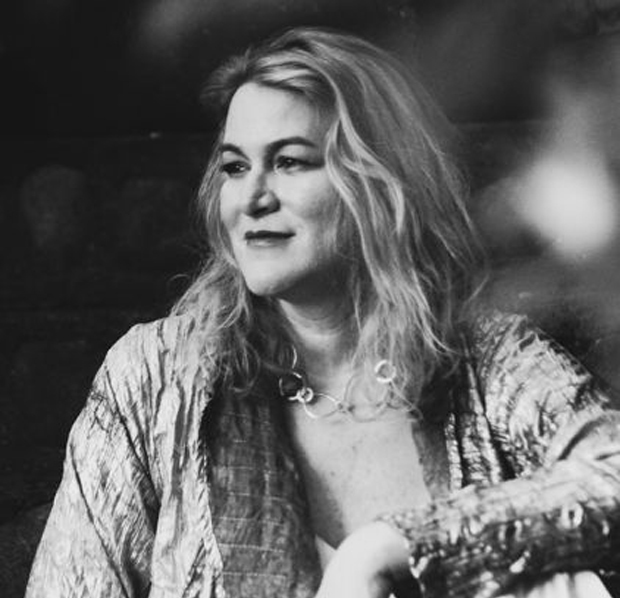Songwriting Steps: The Power of Prosody

OH HAPPY DAY!
Today, you wrote part or maybe most of a song!
The stars were aligned. You were on fire. Your creative juices were flowing like fine Italian wine.
Your Muse (who sometimes ignores you) cuddled up to you all day, inspiring you with ideas and melodies and chord patterns.
So, now what?
This five part series is dedicated to what happens beyond the first draft. Sometimes, songs are born to you like the Goddess, Athena. They spring out of your noggin’ fully formed and perfect. Don’t you love songs like that? They’re gifts from whatever higher power or inner power you believe in. Accept them and be grateful.
But alas, this series is not for those, the chosen ones.
Get The Pick Newsletter
All the latest guitar news, interviews, lessons, reviews, deals and more, direct to your inbox!
This series is for those songs that might need a little tweaking here and there. It’s for those songs that come out rough and unfinished.
I’m going to show you how with a little care and attention to detail, your songs can shine just as brightly as their perfect siblings. We’ll talk about how to get song “bits and pieces” finished, as well as different ways to tighten up a song that’s almost complete.
THE THREE R’s of SONGWRITING
It’s all about the craft, baby. Reworking, revising, rewriting. Notice all three verbs imply pretty much the same thing: being willing to change stuff.
We songwriters tend to get attached to our songs. We fall in love with lyric lines or melodic lines that might not actually be the best elements for our songs. Distance yourself from the song and accept that any section musical or lyrical might need to be tossed out if it’s not working.
THE TRUTH
There is a big difference between what is true and what is right for a song. Just because something happened in real life doesn’t mean that it belongs in your song. Many songwriters get stuck on this.
You have a responsibility to the world you create in your song that is separate from the real world. This is different from being honest. Our songs should resonate deeply with us. We should feel connected to them emotionally and spiritually. I’m talking about practicalities.
Just because you and your two friends were in the bar with you when your boyfriend broke your heart doesn’t mean those friends end up in the song. Edit reality out if it doesn’t serve the song. Remember, you’re a storyteller first and foremost!
FIRST STEP: DOES YOUR SONG HAVE GOOD PROSODY?
At Berklee, we believe this concept is a critical element for a song to be successful. Prosody means your music matches the lyric content of your song. And it should be one of the first things you examine once you’ve finished your first draft.
There are many ways that you can think about this. For example, if your song is about a happy topic, it probably will sit best in a major key. If your song is on the dark side, you might want to think in minor or modally.
Tempo is an important consideration here as well. Sometimes, a songwriter will play me a song that is upbeat in tempo and sounds positive, but the lyrics are talking about some sort of sadness. In this case, the prosody between lyric and music is out of sync, and we, as listeners, are confused as to how we’re supposed to feel.
NOTE: This is different from an intentional disconnect between music and lyric. I used this approach in my song, “Lorelei” where I set a pretty dark murder ballad to an upbeat and cheery tempo and arrangement, to make the betrayal in the song even more creepy and powerful.
Check out “Lorelei” here
It’s kind of like skipping gaily…through a land mine.
Chord placement the last piece of the puzzle you should examine. Think about what you’re saying. If your song is about waiting for love, and you’ve placed that line over a chord pattern that changes every measure and has a lot of tensions and movement in it, that might not be the best framework for your lyric.
So, one of your first steps should be to examine your song to see if the key, tempo and chords of the song match what you want to say lyrically.
THE MIDDLE GROUND
Now, let’s take this concept of prosody one level deeper into your song. Do your melodies support what you’re saying lyrically? This can be one of the most effective ways to create good prosody in your song. To show you what I mean, let’s look at some real life examples:
1.Check out this link to Garth Brooks’ “I’ve Got Friends in Low Places” (written by Dewayne Blackwell and Bud Lee). Notice that the melody drops to the lowest point in the song on the word “low.”
2. When Diana Ross and the Supremes sing “Stop In The Name of Love” written by the great team Holland, Dozier and Holland, notice that the melody actually stops on the word, “Stop.”
3. And here is one more. Sheryl Crow’s “You Don’t Bring Me Anything But Down” uses this wonderful downward swooping melody on the word “down.” So, the music actually feels like it’s bringing us down, doesn’t it? Pretty cool, huh?
The melody matches the meaning. That’s what makes great prosody.
This might seem obvious once you start noticing it, but you’d be surprised how many songwriters miss these opportunities to make sonic connections using prosody. Take a look at your song and see if there are places where you can create great prosody between your melody and your lyric.
THE CLOSE-UP – a glimpse of what you’ve got coming
Good prosody in a song can actually extend to the very DNA of your song. This is a later step in your re-writing process, so I won’t go into detail here. Suffice it to say, the actual lyric structure can support the lyric content of your song. As a songwriter, you have lyric tools to manipulate. Tools like rhyme, number of lines, length of lines and rhythm. They should all be put to good use to support your song’s meaning. More on that to come!
RECAP
Be willing to throw anything out if it doesn’t support the song.
Edit out unnecessary details.
Check for good prosody!
- In your overall musical framework. Key, chords and tempo should match your lyric content. .
- In your melody/lyric relationship - make sure that your melody has also been adjusted to support the meaning of your lyric.
“My state of being has been elevated, because I've been exercising, writing songs. ... No masterpiece ever came overnight. A person's masterpiece is something that you nurture along" Brian Wilson
I couldn’t have said it better. After the inspiration has passed, now comes the fun part. Reworking, revising, rewriting to create your own musical masterpiece. So, roll up your sleeves and dive in!
Susan Cattaneo is a Boston-based singer songwriter who released her fourth album Haunted Heart January 21st. Her music has been played on country and Americana radio in over 30 countries, and she recently was a regional finalist for the New Mountain Stage contest. In addition to her performing career, Susan has been teaching Songwriting at the Berklee College of Music for 15 years. Find out more and purchase her album here: http://susancattaneo.bandcamp.com/
"Upgrading from your entry-level acoustic opens the door to an entirely new world of tonewoods, body shapes, and brands": 6 signs it's time to upgrade from your first acoustic guitar
"I'm past my prime": 5 common excuses for not learning the guitar – and 5 body and mind-boosting reasons you should







![[from left] George Harrison with his Gretsch Country Gentleman, Norman Harris of Norman's Rare Guitars holds a gold-top Les Paul, John Fogerty with his legendary 1969 Rickenbacker](https://cdn.mos.cms.futurecdn.net/TuH3nuhn9etqjdn5sy4ntW.jpg)


